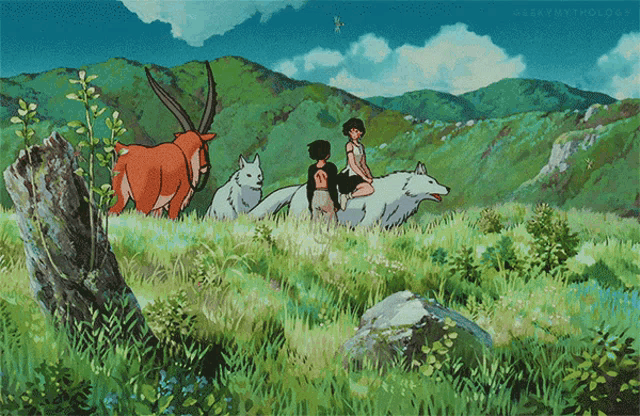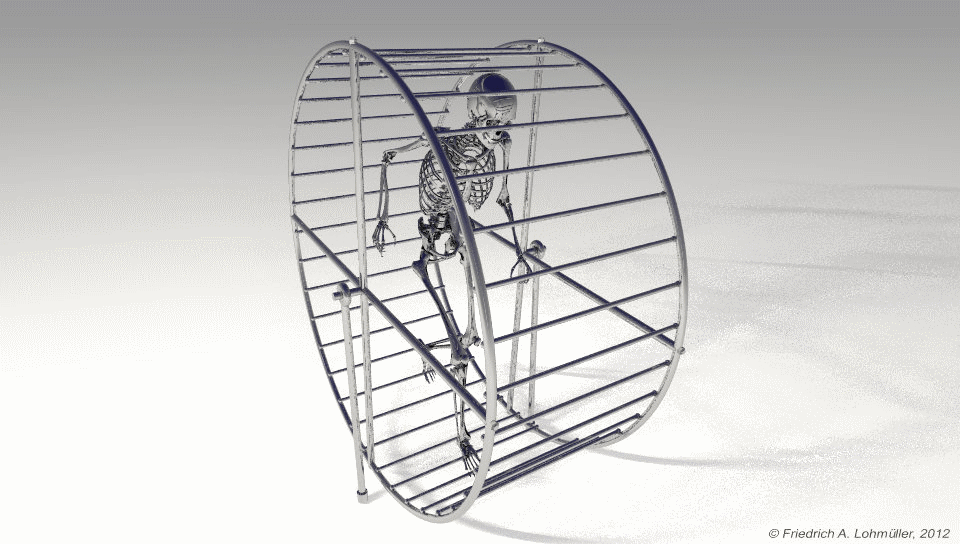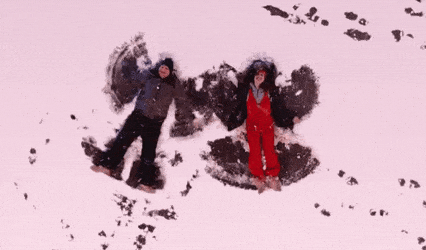on chasing peak experiences & getting schooled by confusing come downs
by Ivan March
Unless you are ejected into the vacuum of outer space, like Sandra Bullock, you will follow the travel path of Newton’s apple, physically and emotionally. If you have had a high, sooner or later there will be a low, and anything not as high as the high will be lower. How low can you go, you ask? Well, limbo lovers, this depends on quite a few things (certainly too many to name).
In both ecstatic communal rituals and in personal vision quests, engaging with flux, finding fleeting roots in chaos, and learning when to surrender are pathways of initiation into the high jumps and death drops of life.

Without rushing to overclinicalized labeling, while some folks have more stable emotional fluctuations, others simply have a tendency (innate, acquired and/or contextual) towards a borderline personality profile, with seesaw moodswings of emotions which can range from extreme happiness, euphoria and self-belief, to crushing feelings of sadness and worthlessness. These folks (myself included) will be more susceptible to the low, lows. Personally, I’ve always found comfort in the Jungian credo “no tree can grow to Heaven unless its roots reach down to Hell” – your capacity to hit rock bottoms, is in some ways what allows you to be uplifted into higher potentials. Of course everyone’s rock bottom is different, we have tolerances for very different types of suffering, so unless we pursue a mild-mannered, middling existence, one without much deviation from a comfortable centre, we better buckle up for some bumpy bumps.

Rollercoaster Livin’
Is your body a temple or a luna park? This depends on who you ask; Anthony Bourdain or Gwyneth Paltrow. Like many self-identified misfit teens, I remember writing Hunter S. Thompson’s quotes on the backs of my school notebooks, “Life should not be a journey to the grave with the intention of arriving safely in a pretty and well preserved body, but rather to skid in broadside in a cloud of smoke, thoroughly used up, totally worn out, and loudly proclaiming “Wow! What a Ride!” – this notion of life being a ride has been reframed many times, yet much of living is organised within a prism of a linearity, milestone checklists, ‘adult’ stability, future-planning, savings, retirements, with perhaps some futile, youth-reclaiming, plastic surgeries thrown in at the end of a macabre conclusion for those who can afford such wacky eccentricities. Somehow there is a crippling weight of collective expectation to conform to such recipes as if they are everyone’s cup of tea, and on top, there’s an expectation to get there smoothly, if you’re a good citizen, an upstanding human, a valuable member of society.
Those who try to go off-piste and carve out a different story, are the weirdos, the savages, the unfortunates, who simply couldn’t make it in the tyrannical normcore narrative. “So, no, mother, I will not get a mortgage, I will find a feral boy with horns and live in the woods with him, princess Mononoke style”. And if Studio Ghibli taught us anything is, find mysticism in the mundane, deviate from preordained paths, chase adventure, reject imposed norms, find your inner wild, follow the inner child, and dance with the gods of small things. (AND, that path will be everything but smooth).
“The world is an exam to see if we can rise into direct experience.”

Mt. (n)Everest Junkies
Adrenalina is a dominatrix, and you enjoy her even if you’re not a sub. Highs bring fulfillment (internal feeling of completeness), significance (increase in personal awareness), spiritual uplift (feeling at one with the world, losing track of time and swimming in oceanic bliss) – therapists, psychonauts, summit climbers and even prophets all agree that states of high, bring unparalleled rewards. This is why we keep electrocuting ourselves like labrats for that fix of golden Gouda. Feels goouda don’t it? A high feels good because it is the sister state of flow, first described by Mihaly Csikszentmihalyi, a state of mind during which people become so involved in an activity that the world seems to fade away and nothing else seems to matter. When in flow, time dissolves, focus sharpens and self-consciousness evaporates. We covered timelessness, & ego depth, but Abraham Maslow adds some highlights behind peak experiences that many festival folk could actively relate to.

Oneness with the environment. The musician becomes the music; the artist becomes the drawing. For Maslow, this is the highest attainment of identity and autonomy.
Freedom from inhibition. There is no second guessing. No presence of fear, doubt or worry in peak experience. There are no psychological breaks to our performance, such as those caused by self-consciousness or performance anxiety.
Spontaneity. You are in optimal improvisation mode. Where there are walls you see windows. “Peaks are not planned or brought about by design; they happen”, writes Maslow, however, festivals are breeding grounds for possible peak experiences, they catalyse the likelihood of spontaneous, organic, peak emergence.
Timelessness. At this height of experience, we become free of past and future, there are no demands or expectations, and the fullness of the self is available in the now.
Unmotivated by needs. Maslow says the individual now acts without needing to avoid pain, hunger, or displeasure. At this level of peak experience, Maslow calls the person godlike because gods have no needs or wants, no deficiencies or lacks.
There are numerous other characteristics of high states, such as a sense of completion, purposeless creativity, surprise happenings (ever notice the abundance of weird or memorable situations that take place during peak experiences?) but a fun-damental state we reach in our peaks is Playfulness. Hierarchical structures we see acted out in default reality seem to not be of much concern to the individual in peak experience. Maslow calls this a transcendence of locality, time, space, history, and the ego-led surface personality, and that is state of play, the state so familiar to children and a state not-so-readily-accessible to us in responsibility-ridden adulthood.
It is clear that when tasted, the high state becomes rather desirable, and we can easily get hooked on chasing such a state, which in turn can become its own prison, an endless hamster wheel of peak experience – but even the labrat will eventually get too full of Gouda and then come the cheese-nightmares.

Come Down, Come Down, Wherever You Are..
While a come up during a psychedelic experience (the pre-trip take off period) is a short, accelerated, bewildering but distinctly felt moment, the comedown is a more elusive creature. It can last for a week or sometimes, in particularly intense cases, it drags on for a seemingly endless period of time. Perhaps it just fuses with a depressive state one might be in or prone to enter. ‘Fitting into a deeply sick society is no measure of good health’, so both depression or extended comedowns are a sign of deeper health, a resistance to comply with default world’s twisted, oppressive ways. Comedown is a teacher. Comedown is a mirror. Comedown is a friend, or it can be at least. Depends on how we engage.
“I’m coming down so you better get this party started!”.
Sometimes it does feel that festival highs punctuate life’s treadmill with hilly highs of hilarity, ecstasy and hopeful bliss, while the troughs, the valleys, the drops are all the in-betweens. But what sense is there to a perma-high? If there is no up and down, then you’re just in helium-balloon-state, levitating into atmospheric heights until the pressure eventually pops you and then all that’s left is perma-deflation. Consumer culture exploits and feeds off of our appetites for highs, from upward deviations from flatness, but finding some pleasure in the flatness will inoculate us from constant high-chasing, side-effects may include: caffeine-slavery-release, sugar-munchie-liberation, compulsive-grindr-scrolling, or any bottomless pit that we seek to stuff with some push towards preakness. But real peaks are really, rare, and real summits need commitment, patience, care and effort, this is what makes them special, this is why we are so grateful for them. Instead of constantly seeking a high (I write, while recalling my complete-year-round-festival-addict days) we can opt for greater discernment and choose which our moments of pilgrimage will be. Attunement with the high, attunement with the low.

On the rollercoaster the drop is where the exhilaration lies, not in the high, the high is just a build up, the charging, the thrill of the ride is in the coming down, the spiraling descent, the shooting back down to the lower plane from whence we came. Learning how to fiercely march through that lower plane is what maturing feels like, yet the road is long, winding and often treacherous, especially if we adopt the stiff-upper-lip mentality (a vestige from the militarised narrative of machismo).
Mark Fisher thought that “the pandemic of mental anguish that afflicts our time cannot be properly understood, or healed if viewed as a private problem suffered by damaged individuals.” Which means we need to collectivize the experience and find healing in our communities, our grandmothers, our closest others and if we have yet to find them, the search must go on.
“On Your Knees”
love,
Your comedown
Festivals are places of ambiguity, of paradox, of clashing states, so the challenge or the open invitation is to find your groove, to get better at intuiting what feels good to you. Saying no without feeling like a loser, sticking by your choices because you know thats whats in the cards for you cos you finally chose some goddamn cards.
We shape our environments (and our vibes) and in turn they shape us. Especially when there’ s group pressure to have fun, to experience a collective high, this pressure is mental, and true fun often relocates to another post code when the pressure to have fun is high. It slips away because fun don’t like pressure and force, fun likes flow and lightness and openness and freedom to be surprised. Birthdays, christmases, anniversaries, specific whenevers laden with high expectations and expectations of highs, it sometimes works but often it doesn’t, it is a bit like picking up a butterfly.. it’s beautiful, you want to touch, to engage, but all the wing dust comes off and the butterfly is pretty much fucked. The over-eager, sweaty fingertips messed up the fairy dust and the fragile magic is lost.
Take it easy. Easy. The opposite of difficult. The desire path, the flow, the zone, the flowzone layer, that interstitial space for you to make a choice.

Between stimulus and response I have time to make a choice. So hop on the Gabor Mate train and listen to a trauma podcast while eating your avo on toast – then if you can break from hipster superficiality, go talk to people, read, rave, discuss, feel, stumble, rave some more, take a class, come to Apuro, read between the lines, reflect, repeat.
Remember, paradoxes. Default world pretends that easy binaries are the state of affairs but good festivals own the paradox, they display it, they can thrive on the discomfort and can mold the boundaries of experience and the comfort zones, they expose trivialities and seduce you into mysteries. And the beat goes on..
So whether you’re dealing with the Monday blues, Suicide Tuesdays, Wasted Wednesdays, Thyroid Thursdays, Friedays, Sateardays or Gloomy Sundays, comes downs ain’t the enemy.
Yes, you can drown in green smoothies, potassium rich foods, Brazil nuts, magnesium, 5HTP-spirulinamacacaigoji supplement injections that will aid your serotonin production. But mostly you need to just sit with your comedown as if it was Yoda or Miss Piggy or whoever you consider a worthy teacher, and see what it has to show you.
“We have seasons when we flourish and seasons when the leaves fall from us, revealing our bare bones. Given time, they grow again” writes Katherine May, acknowledging seasonality and flux. “If happiness is a skill, then sadness is, too. Perhaps through all those years at school, or perhaps through other terrors, we are taught to ignore sadness, to stuff it down into our satchels and pretend it isn’t there. As adults, we often have to learn to hear the clarity of its call. That is wintering. It is the active acceptance of sadness. It is the practice of allowing ourselves to feel it as a need. It is the courage to stare down the worst parts of our experience and to commit to healing them the best we can. Wintering is a moment of intuition, our true needs felt keenly as a knife.”
So perhaps if we treat our comedowns like winters, we will prepare, we will adapt, like plants and other animals, we will perform extraordinary acts of metamorphosis to get us through the winters, and we will emerge, not hardened, not softened, but fluid, resilient, rejoicing in summers and ever more prepared to face other inevitable winters.

PS: For those who like checklists, a comedown checklist:
– Contact. Touch. Body warmth. Oxytocin floods. If you don’t have a cuddle-buddy, find one.
– Good music that holds you and gives you space to process, reflect and extract your own meaning from what you’ve experienced.
– Debrief with other humans. Step into the dance of thoughts and ideas when the body is fatigued and the mind is not.
– Debrief with other lifeforms, plants, furry friends, the deceased, whisper into the wind, shout across oceans, sing off of mountaintops or under city bridges..
– Rest. Rest under capitalism, protestantism, escapist neurotic workaholism, is pure evil – fuck that. Rest rules. YOLO sure but also YORO, You Oughta Rest Often. Perma depletion means no energy to face sadness and pain.
– Make some sweet, sweet playlists for your comedown and share them with friends.
References
Csikszentmihalyi, M. (2009). Flow. [Place of publication not identified]: HarperCollins.
Fisher, M. https://k-punk.org/
Maslow, A. (1943). A theory of human motivation. Psychological Review, 50(4), 370–396. doi: 10.1037/h0054346.
May, K. (2020) ‘Wintering: The power of rest and retreat in difficult times’ Riverhead Books.
Wilder, W., Csikszentmihalyi, M., & Csikszentmihalyi, I. (1989). Optimal Experience: Psychological Studies of Flow in Consciousness. Man, 24(4), 690. doi: 10.2307/2804304.